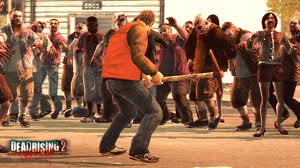No matter what reason casual and hardcore reasons have for playing downloadable games, they are becoming a more important part of the gaming market every day.
The recently released “Dead Rising 2: Case Zero” for XBLA is a new type of downloadable title. The full retail version of “Dead Rising 2” won’t be released until the end of September, but “Case Zero” offers fans of the series a prequel to the main game that only costs five dollars to download, and offers 4-5 hours of gameplay and almost endless re-playability.
Many fans have been complaining that “Case Zero” is really a cleverly designed paid demo, getting gamers excited about the upcoming game while making a profit at the same time. Either way you view it, “Case Zero” offers a new way for developers to release their content in smaller chunks, and for gamers to get bite-sized amounts of games before making bigger investment.
Another type of downloadable content that has become popular in recent years is the add-on. Add-ons, often referred to in shorthand as just “DLC,” are ways for developers to continue their game after releasing the box copy. Recent games like “Borderlands,” “Fallout 3” and “Mass Effect 2” have released multiple single-player continuations to their games.
Also, music games such as “Rock Band 2” and “Guitar Hero” offer downloadable extra tracks for their titles, which lets the game company make more money and the gamer get more from their already-purchased games without having to make new full-game investments.
Many people have asked these games’ developers like Harmonix and Activation to stop releasing new games entirely, and update their games exclusively via DLC. So far though, these requests have gone mostly unanswered.
That DLC is good for developers and gamers alike has been established, but there is another, deeper reason that so many developers are including promises of future DLC in their release plans and announcements.
Stores like Gamestop make most of their profits on the used game market, by buying games back from customers used for 10-20 dollars and then selling them again as “pre-played” for $50-55. While excellent for Gamestop’s bottom line, this practice cuts deeply into game developer and publisher profits. Therefore, the game companies have developed a new strategy to combat this used game profit loss.
This strategy involves promising DLC add-ons for games even before they are released. This way, once a gamer finishes with a game, they will be less likely to want to trade it in and miss out on upcoming downloadable continuations of the story.
Games like “Halo: Reach” and “Call of Duty: Modern Warfare 2” are also heavily reliant upon DLC releases, but with a more multiplayer focus. Shooters like these are played competitively online, and allow developers to offer downloadable upgrades to the multiplayer in the form of map-packs, new weapons, costumes and more.
This is ideal for developers for many reasons. First of all, it extends the profitability of these titles for up to two years after release, and second, these downloads become necessary additions for gamers who wish to remain competitive online, or even be able to play with the majority of online players, so they become must-buy propositions.
When you combine these DLC add-ons with the ever-widening array of great standalone downloadable games being released each week, you begin to get an idea of just how important this new online distribution strategy has become. It’s great for developers, but luckily, as a natural result, it’s great for gamers as well.








